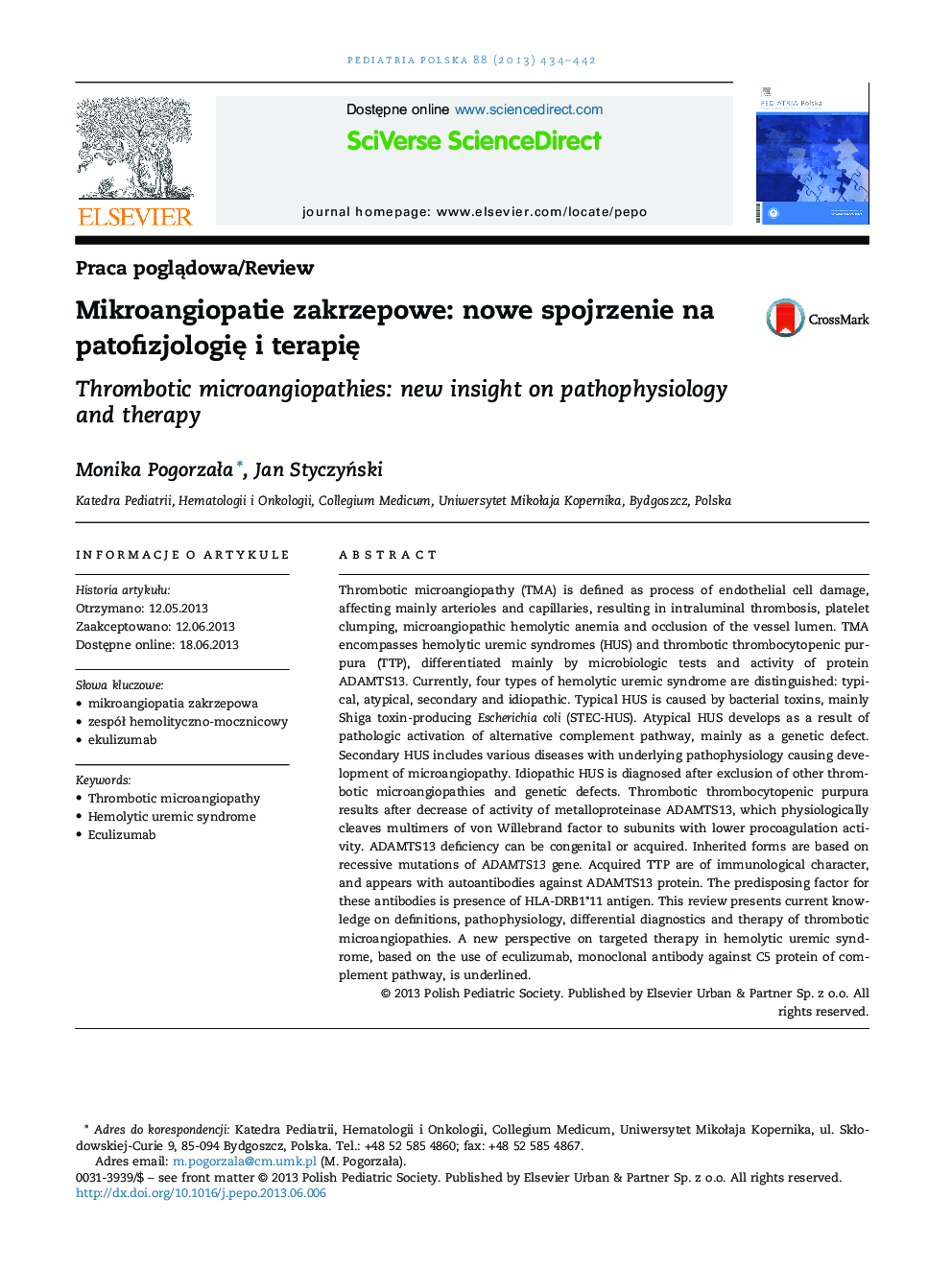| Article ID | Journal | Published Year | Pages | File Type |
|---|---|---|---|---|
| 10162974 | Pediatria Polska | 2013 | 9 Pages |
Abstract
Thrombotic microangiopathy (TMA) is defined as process of endothelial cell damage, affecting mainly arterioles and capillaries, resulting in intraluminal thrombosis, platelet clumping, microangiopathic hemolytic anemia and occlusion of the vessel lumen. TMA encompasses hemolytic uremic syndromes (HUS) and thrombotic thrombocytopenic purpura (TTP), differentiated mainly by microbiologic tests and activity of protein ADAMTS13. Currently, four types of hemolytic uremic syndrome are distinguished: typical, atypical, secondary and idiopathic. Typical HUS is caused by bacterial toxins, mainly Shiga toxin-producing Escherichia coli (STEC-HUS). Atypical HUS develops as a result of pathologic activation of alternative complement pathway, mainly as a genetic defect. Secondary HUS includes various diseases with underlying pathophysiology causing development of microangiopathy. Idiopathic HUS is diagnosed after exclusion of other thrombotic microangiopathies and genetic defects. Thrombotic thrombocytopenic purpura results after decrease of activity of metalloproteinase ADAMTS13, which physiologically cleaves multimers of von Willebrand factor to subunits with lower procoagulation activity. ADAMTS13 deficiency can be congenital or acquired. Inherited forms are based on recessive mutations of ADAMTS13 gene. Acquired TTP are of immunological character, and appears with autoantibodies against ADAMTS13 protein. The predisposing factor for these antibodies is presence of HLA-DRB1*11 antigen. This review presents current knowledge on definitions, pathophysiology, differential diagnostics and therapy of thrombotic microangiopathies. A new perspective on targeted therapy in hemolytic uremic syndrome, based on the use of eculizumab, monoclonal antibody against C5 protein of complement pathway, is underlined.
Related Topics
Health Sciences
Medicine and Dentistry
Dermatology
Authors
Monika PogorzaÅa, Jan StyczyÅski,
